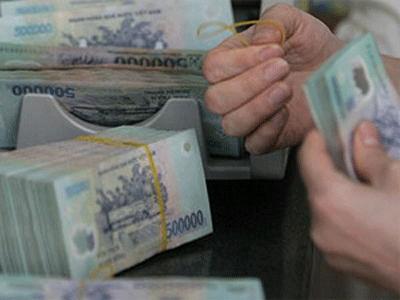Experts urge to reconsider electricity prices for steel and cement producers
Steel and cement producers
have been enjoying too many preferences as they can buy electricity at low
prices. Experts believe that it is now the right time to eliminate the
unreasonable thing. 
According to Minister of Finance Vuong Dinh Hue, in 2010 alone, cement and steel producers enjoyed the subsidization of 2547 billion dong as they could buy electricity at low prices.
The unreasonable thing has been existing too long
At the latest National Assembly’s session, when explaining to the electorate about the loss incurred by the Electricity of Vietnam (EVN), Minister Hue talked about the so called “cross-compensation" in the sale prices applied among the key industries in Vietnam.”
For example, power generators now can buy coal at the prices which are just equal to 57-63 percent of the export prices. Meanwhile, the two energy-consuming industries – steel and cement – have been enjoying higher subsidization level.
Citing the auditing results in 2010, Hue said that the two industries consumed 11 percent of the total commercial electricity output (982 million kwh). The problem was that the producers only had to pay 914 dong for every kwh used, while the electricity production cost was 1180 dong per kwh in 2010, according to the Ministry of Industry and Trade.
As such, EVN has subsidized 2547 billion dong to steel and cement producers. Especially, foreign invested steel producers have got the subsidization of more than 506 billion dong.
Power generators can buy coal at low prices, but EVN then has to sell electricity at low prices to key industries.
Well understanding that the electricity price in Vietnam is low thanks to the subsidization, foreign steel manufacturers have been flocking to Vietnam recently to set up steel mills, turning Vietnam into the steel production base for export
“We need to settle the problem when regulating the pricing mechanisms,” Minister of Finance Vuong Dinh Hue said before the National Assembly.
Right after the statement was made, the Member of the National Assembly’s Finance & Budget Committee Nguyen Huu Quang posed a question: “Should we encourage steel and cement once the production costs of the products do not truly reflect the real costs?”
Quang told Thoi bao Kinh te Saigon that it is clear that cement and steel producers have benefited from the low coal and electricity prices. Quang, who once worked for the Vietnam Cement Corporation, said that EVN now has to pay 1400 dong for every kwh of electricity it buys from China, but it has to sell at less than 1000 dong per kwh to cement producers.
The Vietnam Coal and Mineral Industries Group (Vinacomin) exports coal at 3 million dong per tonne, while it has to sell coal to cement producers at 1.7 million dong. This has led to the massive illegal export of coal which remains uncontrollable.
“I many times asked to restrict the export of cement and clinker, because the export prices are lower than the domestic prices. In exporting, enterprises can earn profits, but the State cannot, while the subjects for subsidization in the society, also cannot enjoy any benefits from this,” he said.
Quang went on to say that it is necessary to charge the right prices on cement and steel producers in order to not to distort other relevant industries.
Five months ago, the Ministry of Finance planned to raise the steel export tariff to 3 percent, because steel producers can enjoy the low prices of coal and electricity which allows them to reduce the production costs.
However, the plan was not implemented, because the Vietnam Steel Association said steel producers would rather to accept to pay the electricity market prices than the higher export tariff. The association agrees that raising the electricity price could be considered as an opportunity to eliminate the producers using backward technologies, while helping save energy.
Vietnamnet/ Source: TBKTSG

